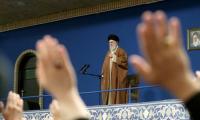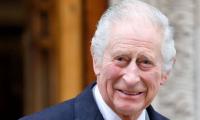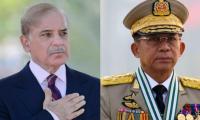There is a profound disquiet about the state of the country across all social, economic and political classes. People are worried about how badly the next wave of Ishaq Dar branded madness will affect them when they go to buy basic groceries, or when they try to get a discount at the private school where their kids are studying, or when they try to get an installment plan to pay for an unforeseen medical emergency that their parents have suffered. After all, even though Pakistan is younger and younger, old people are still getting older.
It is hard to remember when there was less excitement about a new Pakistani government – which is profoundly sad for two reasons, one macro and the other micro.
The macro is that a lot of first-time voters chose to show up on polling day. They did so with great hope about the future and great conviction about the institutions of Pakistan (they had to have, given the throttling of many civil rights that preceded the election). What took place on the evening of February 8 and throughout February 9 and February 10 may have cost the PTI 13 seats, or 22 seats, or even the magical 35 seats in the National Assembly – we cannot be certain. What we can be certain about is that what took place cost Pakistan’s institutions the confidence of those young first-time voters. This is not just sad, but also potentially dangerous and cannot be ignored.
The micro is that Shehbaz Sharif remains – among senior politicians in the country – one of the few who is genuinely excited about building new things and watching Pakistanis benefit from them. For him to take his second oath of office in even worse overarching circumstances than when he took oath in April 2022 is sad because it feels like the deck is stacked against him – heavily. Whatever he manages to deliver whilst he is PM during this term will be burdened by sins that were not of his doing. Like cowbell, this country, the PML-N itself, the PPP, and the PTI all needed more Shehbaz Sharif, not less. This version of Shehbaz Sharif is less – from even before he takes oath.
Despite the lack of excitement for this government, it is important to highlight the big win for Pakistan amidst all this. Consider just how incredible it is for Pakistan to have elected its fourth consecutive parliament – without the disruption of the suspension of our constitution, without martial law, without military rule, and without a general becoming the formal leader of the country. From the election in February 2008 till the election in February 2024 marks a full sixteen years of concurrent, consecutive, sustained democracy in Pakistan.
Is it flawed? Of course, it is. We live in the age of populism and digital hyperbole – everything is flawed. Is it weak? Of course, it is. When a parallel government is set up (this time under Brand SIFC), it is certainly not a certificate of good health for civilian governance. Is it open and free? Hardly. Between populism on one side and sustained neo-feudal dynasties on the other, there is hardly any space for new politics to emerge. The press and media are intensely different and significantly less free from what they were back in 2008.
Still: four consecutive parliaments is nothing to scoff at. Those for whom nothing in Pakistan is ever good enough never tire of reminding Pakistanis that no prime minister has ever completed a full five-year term. If that is a legitimate critique of the quality of democracy in Pakistan, then four consecutive parliaments represent a legitimate credit to democracy’s incredible endurance in the conflict zone that is Pakistan’s alignment with its constitution.
The military’s shadow hovers over all governance. This is also clearly true. Public policy is imbued with Pindi’s fingerprints to an unprecedented degree. At a time when the country faces kinetic threats at four of its five borders – Afghanistan, Iran, the Indo-Pacific via the Arabian Sea, and of course, Mother India – Pakistan is investing in an unquestionably high-risk strategic tilt by choosing to have an institution this deeply involved in affairs not related to it. This is one among a slew of very profound challenges that Prime Minister Shehbaz Sharif will face.
So, will Prime Minister Shehbaz Sharif succeed or fail? Even the most hardened anti-Sharifs will likely be more invested in Pakistan’s well-being than they will be in their partisanship. Indeed, one might say that the whole country (including the most robust critics of the Sharifs) would want PM Sharif to succeed. There is just one problem. We can’t really tell if the incoming government will succeed or fail because we don’t know what this government’s objectives are.
When the PPP coalition government took over in 2008, we knew exactly what its key objective was. The project then was to shore up democratic governance and renew Pakistan’s federal character. A team effort – led by Asif Ali Zardari in the boardrooms, Nawaz and Shahbaz Sharif at the seat of power in Lahore, and General Kayani at GHQ – delivered. Pakistan got the 18th Amendment and the seventh NFC Award. Lots and lots went wrong too, but the key objective of that government was delivered.
In 2013, when the PML-N took power under then-prime minister Nawaz Sharif, we also knew exactly what that government’s primary objective was. It was a government for electricity. Many young Pakistanis will not recall just how bad loadshedding had gotten in the run-up to the 2013 election, but building out the electricity generation capacity was the overarching strategic objective. This objective was achieved. Was it achieved in the best manner possible? Given the burden the IPPs impose on the exchequer and the carbon footprint solutions generated, clearly not. Like the PPP coalition in 2008, lots and lots went wrong for the 2013 PML-N government too – but the key objective of that government was delivered.
When Imran Khan became PM under the PTI coalition in 2018, we also knew the overarching objective of that government. One can frame that objective in different ways – for the PTI itself, the preferred framing was that it had been elected to end corruption. My interpretation (knowing how many allegedly corrupt patrons that government had itself) was that what the PTI really meant was that it had been elected to change how Pakistan worked. It was the first truly reformist mandate Pakistanis had voted for since 1988. Of course, this objective was not met. Despite that, lots and lots went right for the PTI government – its handling of Covid-19, expansion of the social protection offered by the state, improved civil-military relations, and a powerful health insurance scheme – but the key objective of that government was not delivered.
The problem that bled PM Shehbaz Sharif in 2022 and will bleed him even more profusely in 2024 is not the degree of legitimacy the electorate affords to his government. That burden will be carried more by the backers of the SIFC than it will by the PML-N. The problem that hounded the first term of PM Sharif in 2022-2023 and will haunt him even more in 2024 is the absence of a coherent objective.
Ask and they will say the country’s polycrisis demands steadiness and stability. What does this mean? They will tell us it means securing an IMF programme and repairing relations with China, the United States, Saudi Arabia, and the UAE. But probe a little deeper and there will be little of substance.
What we know is that the core objective of the incoming government is not economic growth, it is not regional consolidation of Pakistan’s role as a net provider of security in the region, it is not improved female labour force participation, it is not dramatic actualization of Pakistan’s trade potential, it is not terminating the TTP and its affiliates, it not solving the crisis of malnutrition, it is not expanding adult literacy, it is not burying polio for good, it is not winning the next cricket world cup, it is not establishing a framework to take advantage of various opportunities for Pakistan – from Saudi Arabia’s Vision 2030, to artificial intelligence, to a demographic dividend. It is certainly not solving Pakistan’s energy dependence problem, or its foreign direct investment problem, or its broken civil services problem, or its phantom local governance problem.
If there is a core objective and purpose for the incoming government, it seems to be for it to be the government. Of course, for as long as it is allowed to be this government, it will succeed. But is this really the flight of a shehbaz?
The writer is an analyst and commentator.
This demand has fueled rapid growth deposit base of Islamic Banks and Islamic Windows operated by conventional banks
But Punjab Agriculture Food and Drug Authority building near Thokar Niazbeg on Multan Road stands out
Macron has been particularly vocal in their criticism, asserting that withholding arms from Kyiv plays directly into...
As PPP governs province, Bilawal Bhutto Zardari holds strategic position to address both violence and its underlying...
Critics argue that strategy is vague, but closer look indicates strategic alignment with global trends and national...
To defeat it, we must distrust bot-driven narratives, to defeat it, we must verify sources before believing or sharing







